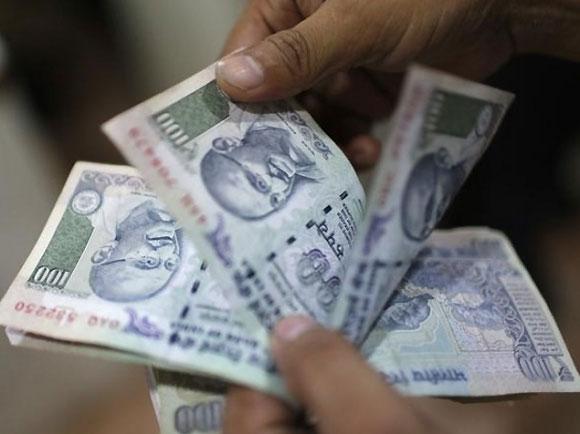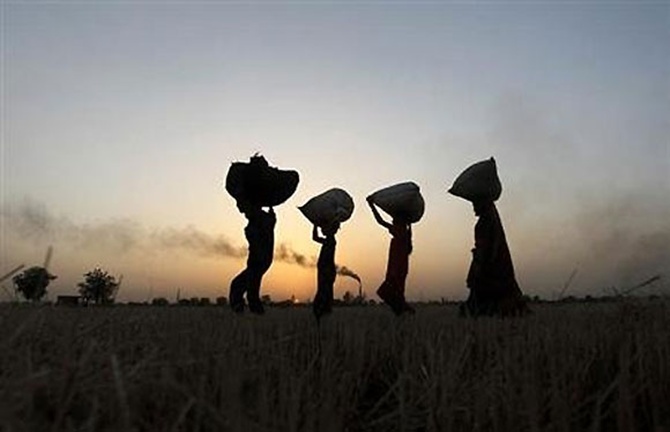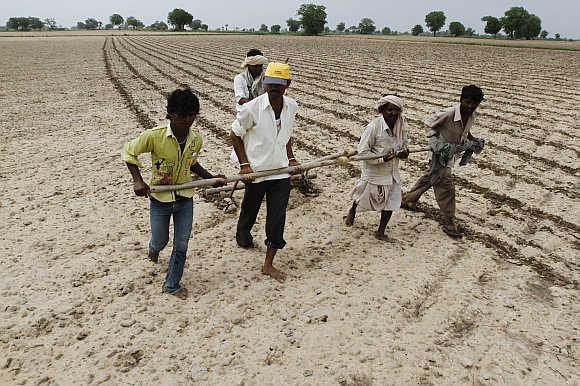 | « Back to article | Print this article |
Why the Indian economy will continue to suffer
The overhang of corporate debt is the primary straitjacket that ties our firms down, not the bottlenecks created by our alternately slothful and interventionist courts and bureaucrats, says Rahul Jacob.
Corporate chiefs and foreign institutional investors alike have been looking ahead to the prospect of a stable, business-friendly government this summer as a panacea for India’s economic slowdown.
The truth is that a new government – even after this ham-handed government – will change very little. A return to gross domestic product (GDP) growth rates of eight to nine per cent is out of the question.
India’s economy is caught in a pincer. High levels of corporate leverage mean that the economy will continue to suffer from low corporate investment while the cutback in rural subsidies and slow income growth among the vast majority of the population, both urban and rural, will ensure that demand is not going to grow to the levels our companies have been banking on.
Click NEXT to read more...
Why the Indian economy will continue to suffer
Witness the rapid drop in growth rates in rural markets being currently experienced by fast-moving consumer goods (FMCG) companies.
The overhang of corporate debt is the primary straitjacket that ties our companies down, not the bottlenecks created by our alternately slothful and interventionist courts and bureaucrats.
The results of the substantially unhedged borrowing binge of India Inc of the previous decade cannot be undone quickly.
In fact all the evidence suggests that as slower GDP growth persists, the debt picture, unsurprisingly, looks grimmer. Non-performing assets at Indian banks of 4.2 per cent in September are expected to climb to 5.7 per cent in the next four months, the Wall Street Journal quoted analysts as saying earlier this week.
That our bad debt problem is now front-page news in the international press suggests that even the magic woven by Raghuram Rajan over the past few months has its limits.
Click NEXT to read more...
Why the Indian economy will continue to suffer
Where corporate India is concerned, “today, the binding constraint is not bottlenecks [preventing investment] but leverage,” says Sajjid Chinoy, chief economist with JP Morgan. Mr Chinoy points out that whereas growth in corporate private investment jumped from 12 per cent to 20 per cent between 2005 and 2008, we have gone all the way back down to 13 per cent today.
In a report card in November, Credit Suisse looked at the health of a group of listed companies under financial stress. It found that the share of loans with companies in its sample that had interest coverage of less than one had risen to 34 per cent in the second quarter of this financial year, from 31 per cent. (A ratio of less than one means a company is having problems generating enough cashflow to meet its interest expenses.)
“Given continuing cashflow strain and currency depreciation, debt levels for most stressed corporates have increased further,” Credit Suisse observes. “Debt levels for many of the larger stressed corporates increased 5 to 12 per cent in the first half of FY14.”
Click NEXT to read more...
Why the Indian economy will continue to suffer
From toll road projects that did not make economic sense to mergers and acquisitions that were driven by ego rather than efficiencies, corporate India has done this to itself. The only way out is deleveraging, but that reality suggests corporate investment is not going to bounce back soon.
If demand picked up significantly, it would make servicing debt easier as well as lead to an increase in investment. Unfortunately, the combination of a cutback in rural subsidies and spending on rural infrastructure as New Delhi tries to meet its fiscal targets as well as the high inflation of the past couple of years has eaten into rural income growth.
The discretionary spending of what the marketing consultant Rama Bijapurkar defines as middle-class India in cities and villages – those with a per capita income of about $1,000 (Rs 62,000) – has dropped.
Click NEXT to read more...
Why the Indian economy will continue to suffer
This segment accounts for 40 per cent of total consumption expenditure. As Ms Bijapurkar observed in an essay for Mint: “They were seated in the consumption train, but are now precarious footboard travellers.”
Speaking to me a couple of days ago, Ms Bijapurkar recounted the story of someone she knew who had quit a job as domestic help to start a small business cooking meals for street hawkers in Borivali.
The successive LPG price hikes over recent months contributed to the closure of the business because she could not pass on higher prices to her customers.
Ms Bijapurkar blames the slow growth of jobs in the formal economy for the fact that many people described as self-employed are just about making a living. Still, she believes corporate India doth protest too much. “The government is not your sales and marketing director,” she says.
Click NEXT to read more...
Why the Indian economy will continue to suffer
What both government and industry must take the blame for is their inability to build a labour-intensive manufacturing sector over the past decade or two.
The rupee’s weakness might yet provide an impetus to do so but our competitors, ranging from China to Indonesia and Bangladesh, have already stolen a march on us.
A Crisil study released on Tuesday estimated that slower GDP growth and the absence of a large increase in factory jobs will force tens of millions of job seekers of the 85 million entering the workforce by the end of this decade to rely on subsistence farming for employment instead of moving to the cities.
As with the recent increase in non-performing loans in the Indian economy, this apocalyptic news means that in terms of creating a genuinely large middle class, India is sliding backwards. Nothing short of a miracle can solve either of these problems in the near term.






